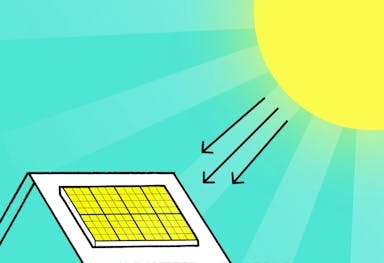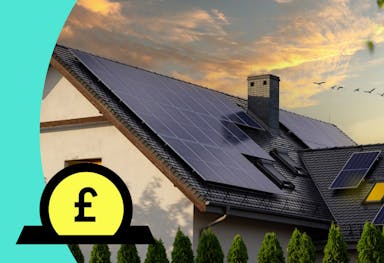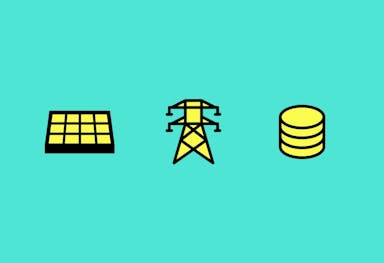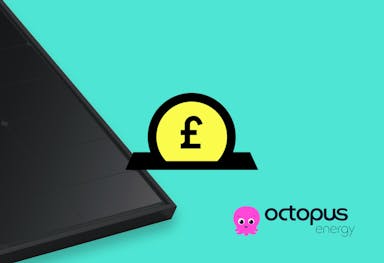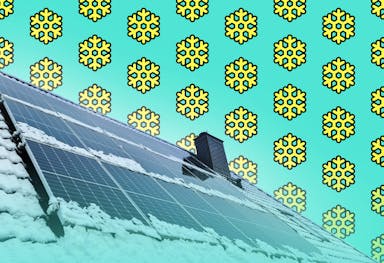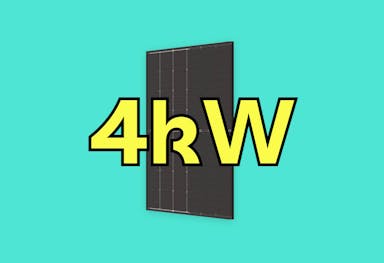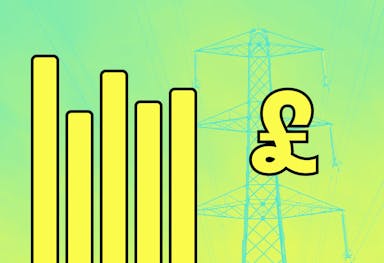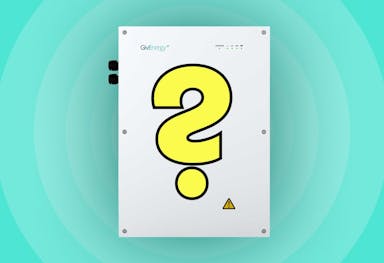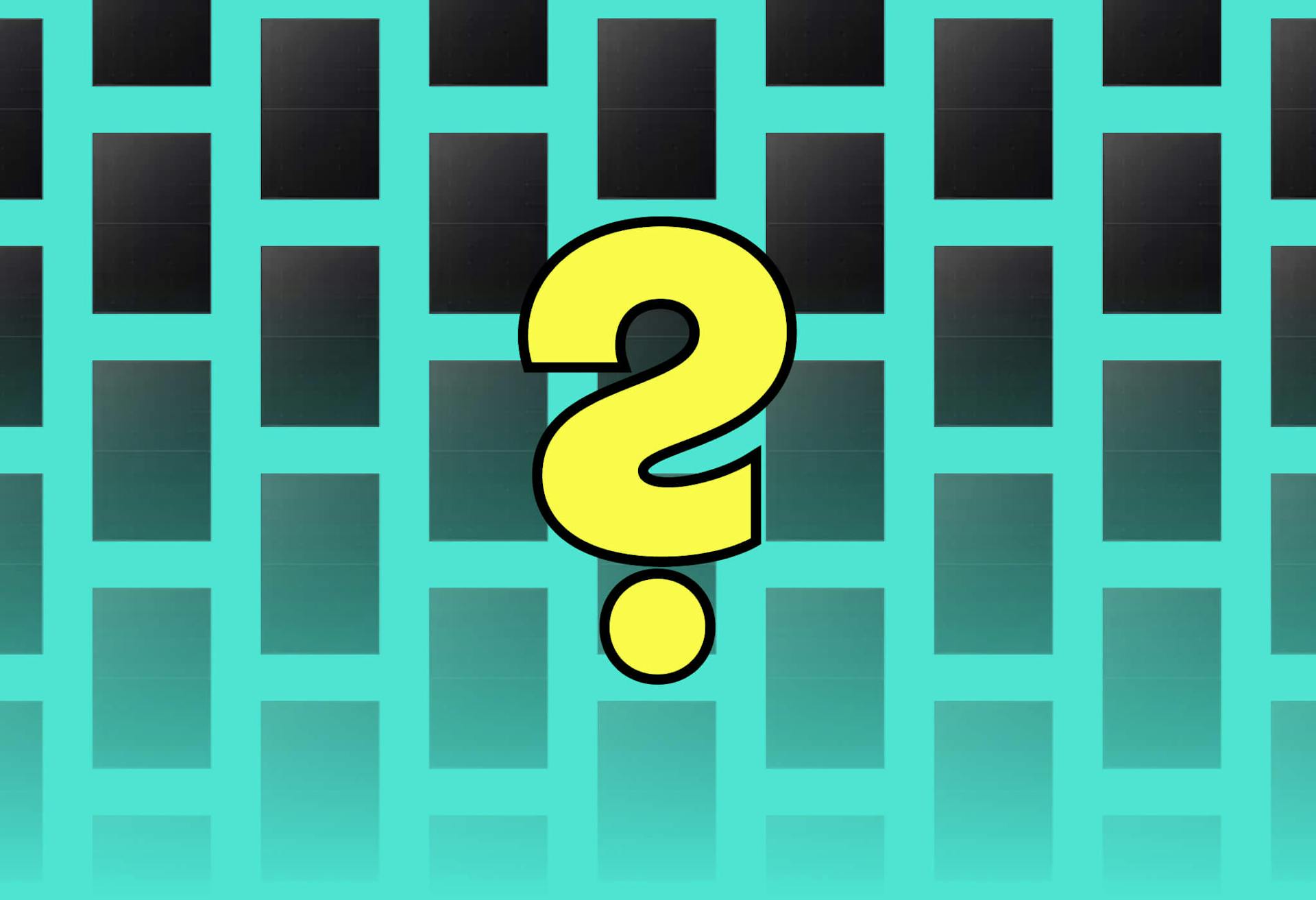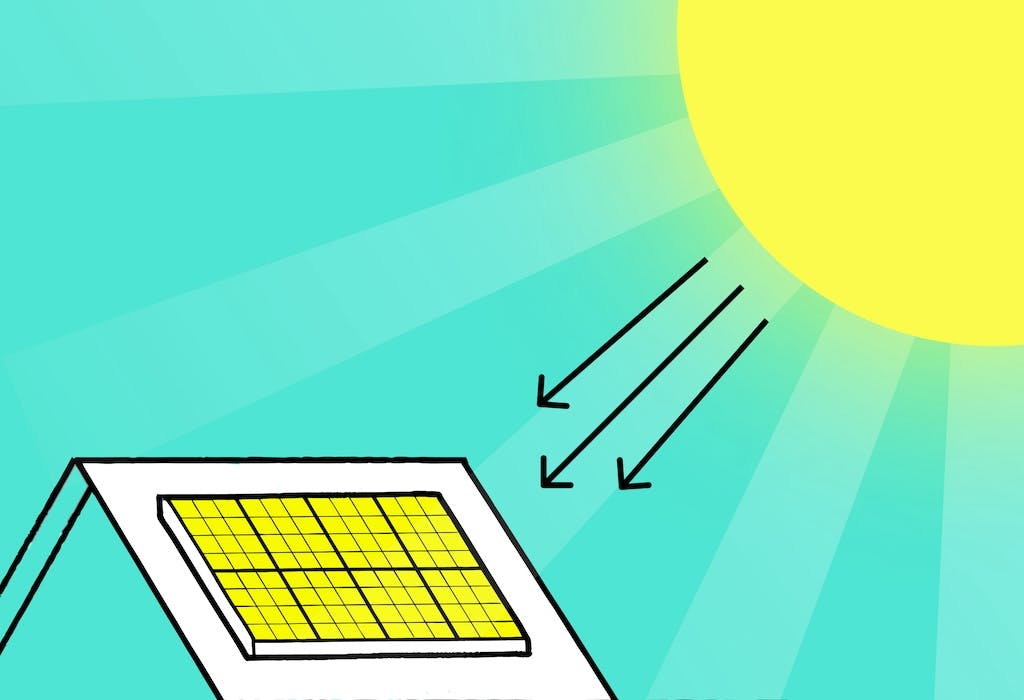- Solar advice hub
- System-size
- How much energy do solar panels produce?
How much energy do solar panels produce?
Discover the typical electricity output of a solar panel system in the UK – per year, per day, and per hour – as well as what affects it.


Why you can trust our content
We know that the solar industry is full of misinformation, but we only use reliable sources, including:
- Our experienced solar experts, installers and system designers
- Our own database of solar & battery system designs
- Authoritative bodies like MCS and the UK government



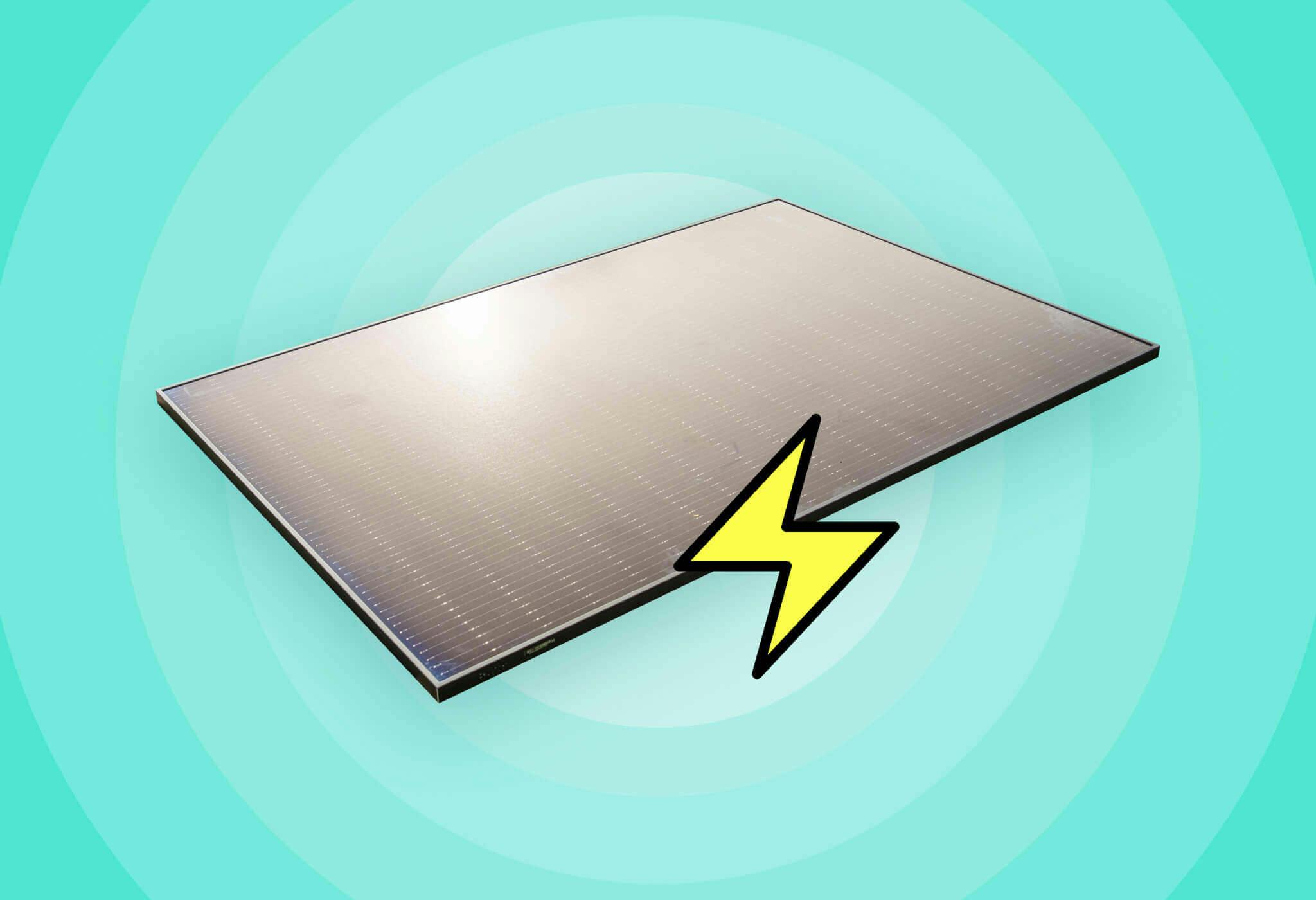
Calculate savings
What kind of home do you live in?
Calculate savings
What kind of home do you live in?
At a glance
It’s widely known that solar panels generate electricity and reduce people’s reliance on the national grid, but how much electricity do they actually produce? Is it reasonable to expect solar panels to completely cover your electricity needs?
In this article, we'll explore roughly how much electricity a solar panel system can produce, and explore the various factors that can influence solar output.
If you’re interested in switching to solar, you can find out how much a solar & battery system could save you by answering a few quick questions below.
Find out how much you can save
What kind of home do you live in?
What’s the typical output of a solar panel system?
A solar panel system in the UK will typically generate around 85% of what it could produce in constant, perfectly sunny weather.
This is based on the level of solar irradiance at Dunsop Bridge, a village in Lancashire which the Ordnance Survey has declared the geographic centre of Britain.
If you live south of this location, you can expect more solar irradiance, while places to the north will usually receive less, though this isn't always the case, and there are other important factors that we discuss further down.
If a system has a peak rating of 4.4 kilowatts-peak (kWp), it would produce 4,400 kilowatt-hours (kWh) per year in standard test conditions (STC), which is a set of environmental factors used across the industry to measure a panel's capabilities.
But since the average conditions in the UK are around 85% as good as STC, these panels will produce around 3,740kWh per year.
This is more than enough for the average household, which typically uses 3,400kWh of electricity per year, according to government data.
Typical solar panel output by system size, UK
As well as the average irradiance mentioned above, this chart also assumes you have a south-facing roof with no shading.
The average size of a domestic solar panel system in the UK is 4.6kWp, according to the Microgeneration Certification Scheme (MCS) data dashboard in March 2025.
As you can see, the main factor behind how much energy your panels generate is the size of the system, which makes sense – the bigger and better your system, the more electricity it'll produce.
But even with identically sized systems, you can see massively different output levels. Check out a few examples here of systems we’ve designed for real households:
| Location | System size (kWp) | Annual output (kWh) | Annual consumption (kWh) |
|---|---|---|---|
| Kent | 5.16 | 5,112 | 4,972 |
| Southampton | 6.02 | 5,657 | 4,545 |
| Buckinghamshire | 4.3 | 4,212 | 6,298 |
| Essex | 9.79 | 8,379 | 7,500 |
| Greater Manchester | 4.4 | 3,696 | 5,485 |
| Somerset | 6.16 | 5,519 | 5,025 |
| Dorset | 6.6 | 5,577 | 2,907 |
| Greater London | 5.16 | 5,078 | 6,318 |
Despite all of these systems being in different places in the UK, location is not the only variable at play here.
Your system's output will also be affected by differences in roof orientation, angle, shading, and what type of inverter the system has.
How much will this save you on your energy bills?
On average, you could save 86% on your electricity bills with a solar & battery system.
This figure is based on a sample of over 150 systems installed by Sunsave across England and Wales in 2024. The average system is 6.1kWp, with 54% of solar electricity used at home and 46% exported to the grid.
How much energy do solar panels produce per month?
A 4.3kWp solar panel system will produce around 305kWh per month, on average.
This can vary massively across the year, though.
During the summer months, you may see generation rise to around 460kWh per month, while in winter, production levels can fall to 140kWh per month.
For more information, read our guide to how well solar panels work in winter and on cloudy days.
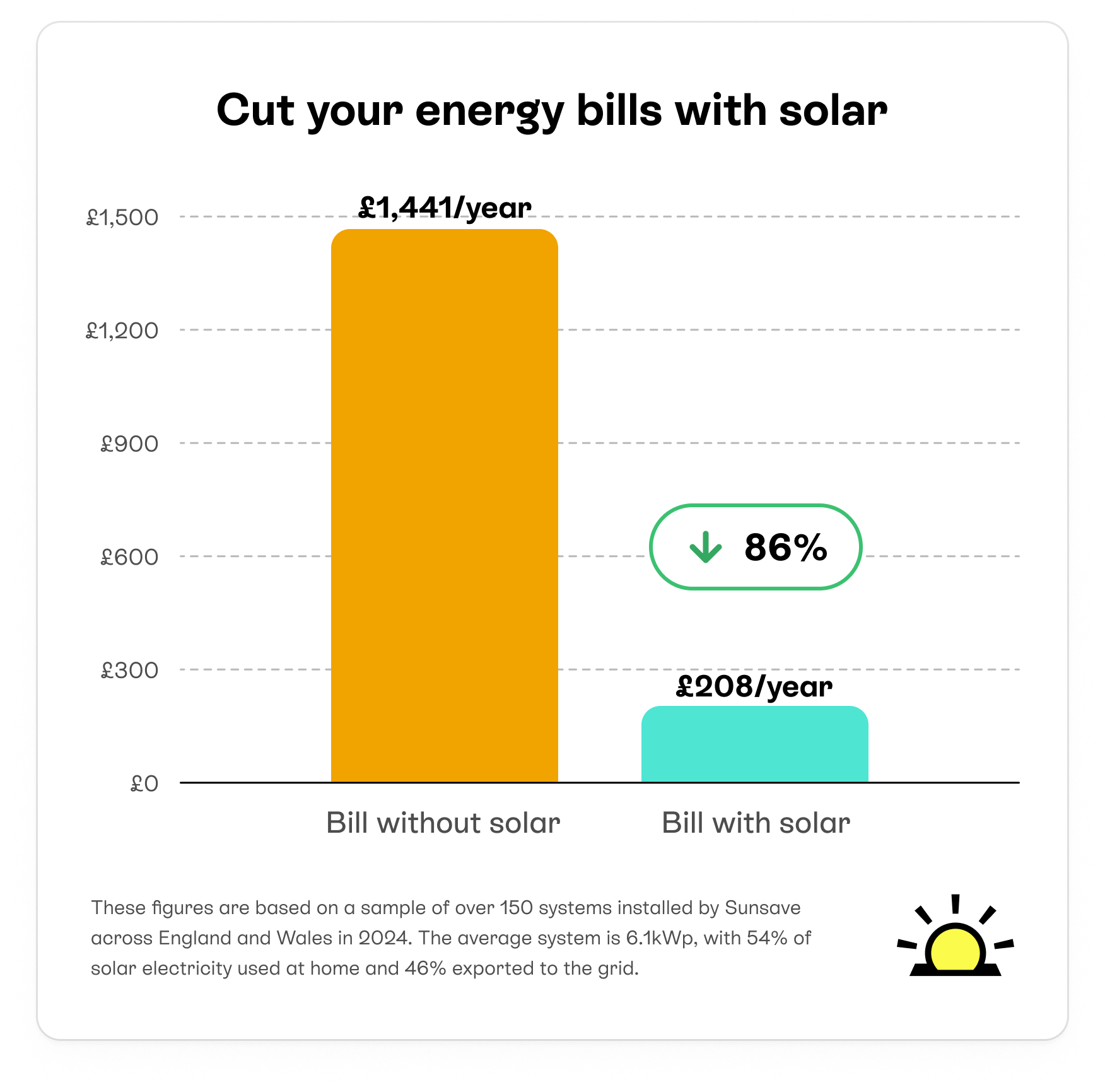
How much energy do solar panels produce per day?
A 4.3kWp solar panel system will produce 10kWh per day in the UK, on average.
However, you shouldn't take this as a hard-and-fast rule, because your system's daily generation levels will vary massively, due to a host of factors.
As well as the variables listed above – like orientation, angle, shading, and inverter type – generation will also be affected by each panel's peak output, their location, the weather, and what time of year it is, as this will determine how many hours of daylight there are.
On average, a 4.3kWp solar panel system in London will produce 8.8kWh per day, while the same system in Exeter will typically generate 12.8kWh per day.
If it's in the ideal situation though, on a south-facing roof with an orientation of 40°, it'll produce even more solar electricity.
And wherever you are, your output will likely be around 55% below the average in winter, and 52% higher than average in summer.
As a result, you'll usually have to buy grid electricity during the colder months to make up the shortfall, but you can then sell your solar energy to the grid when summer comes round again.
To find out all the top choices when you're selling electricity, read our guide to the best SEG rates.
Verified expertAt Sunsave, we have a gold membership with the Energy Performance Validation Scheme (EPVS), which means all of our savings estimates follow a methodology that has been validated by an independent third party. Whichever installer you choose, make sure their estimates are EPVS-approved.
Alfie Ireland
Head of Operations & Technical at Sunsave
Alfie has worked in green tech for over a decade. During his four years at OVO, he helped develop the world’s largest domestic vehicle-to-grid trial.
How much energy do solar panels produce per hour?
A 4.3kWp system produces 0.8kWh per daylight hour, on average.
Your daily solar output will be higher than this average in summer, when there are more daylight hours, and lower than average in winter. We'll go into more detail below.
Your solar panel system will be most productive at solar noon, when the sun is at its highest point in the sky.
Due to the nature of the Earth's orbit, this time is almost never exactly 12pm, but instead occurs between 11:40am and 1:10pm, depending on the time of year.
You should therefore concentrate as much of your electricity consumption as possible during this time and the couple of hours either side, to take advantage of your increased solar output.
Run the dishwasher, do the laundry, cook dinner – whatever makes sense for you.
Though of course, if you have a solar battery, you can simply store the extra electricity and use it later.

The UK's first solar subscription
- No upfront cost
- Fixed monthly fee
- 20-year Sunsave Guarantee
Solar panel output per m²
The average solar panel output per m² is 186kWh per year.
Solar panels are usually around 2m², which means the typical 430-watt model will produce 372kWh across a year.
A solar panel system will need space on either side, so finding out your roof's area is only one part of working out how much solar electricity you can generate, but it's a great first step.
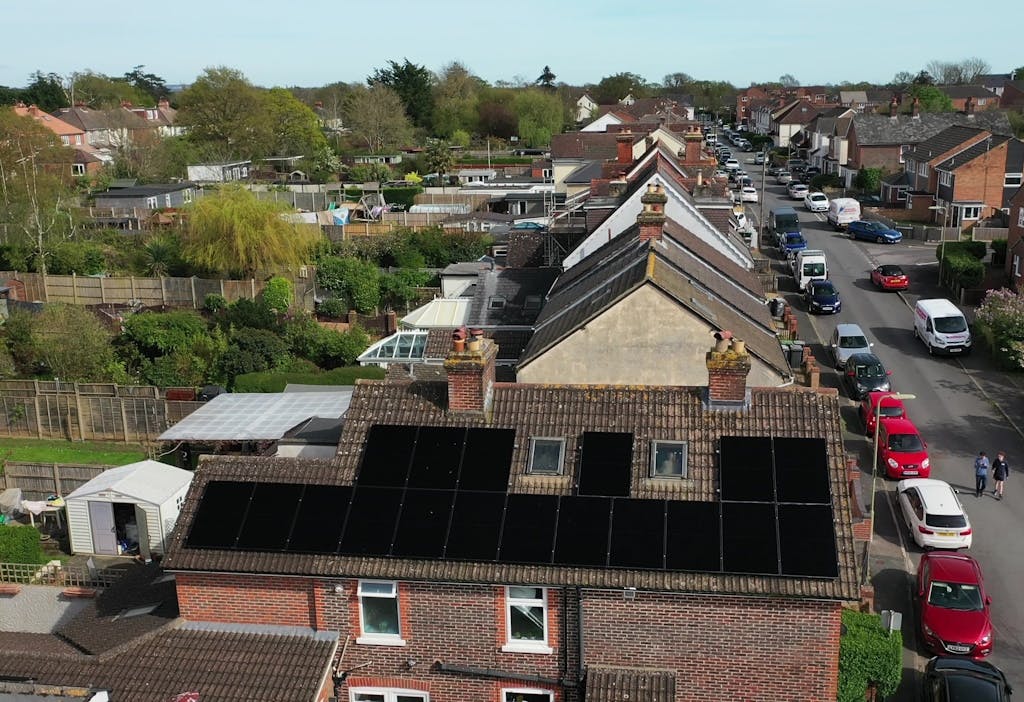
Solar panel output: winter vs summer UK
A solar panel system does not consistently produce the same quantity of electricity throughout the year. In the summer months when the sun is high in the sky (and the days are long), solar panels are at their most productive.
And conversely, in the winter months when the sun is low in the sky (and the days are short), solar panel output drops quite significantly.
For example, consider the below output chart, which is based on a four-bedroom home in Essex with a 6kWp solar panel system and 5kWh battery.
The system generates almost 25kWh of electricity each day in May and July, but produces just 4.9kWh per day in December.
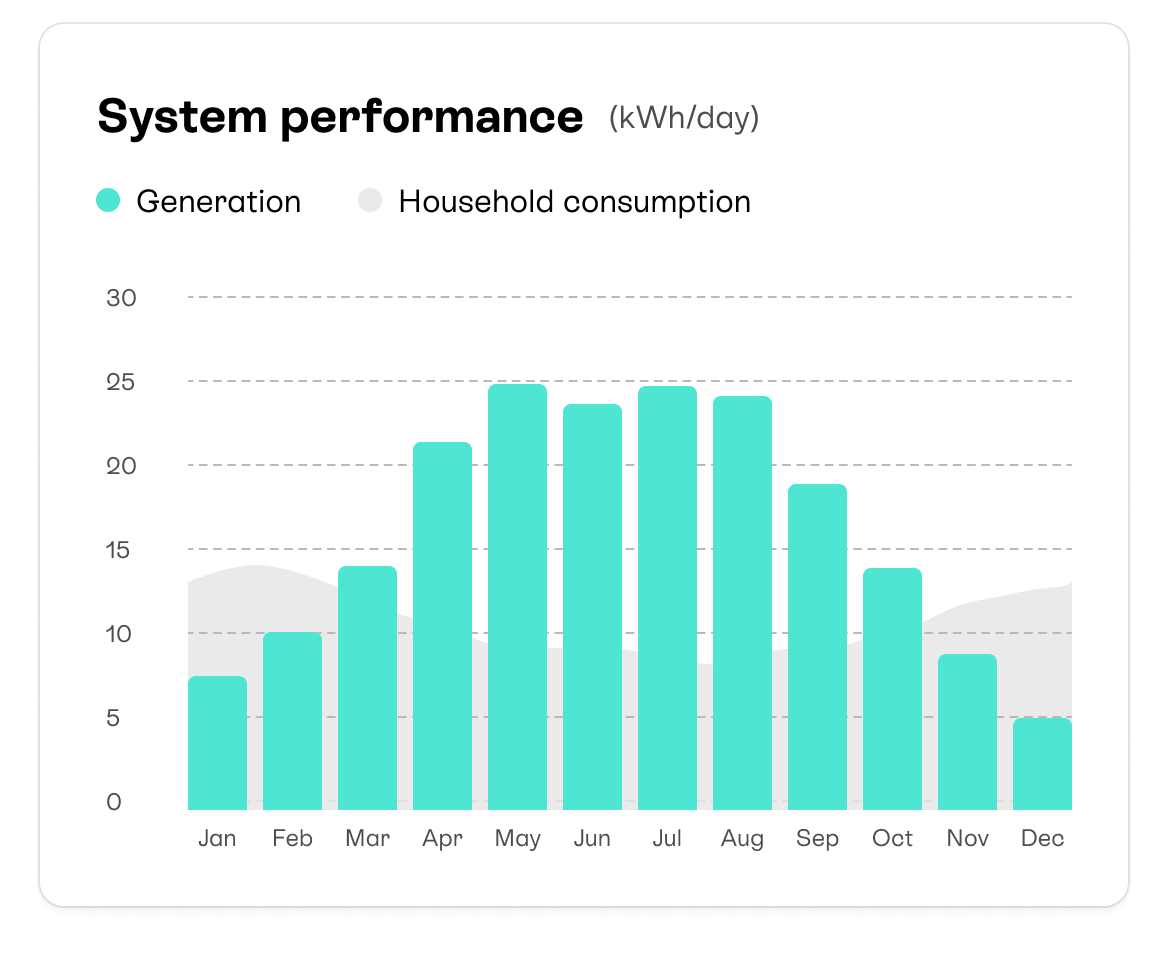
Broadly speaking, a solar panel system in the UK will produce about 70% of its total output in spring and summer (March to August), with the remaining 30% coming in autumn and winter (September to February).
The chart below should give you a rough idea of how productive your solar panel system will be across the four seasons (ranging from around 11% in winter to almost 38% in summer).
Solar panel output by season
Solar panel output: UK vs Europe
Solar panels can produce more than enough electricity in the UK to help people significantly reduce their energy bills, despite the fairly cold and cloudy weather for much of the year.
Check out the chart below to see how solar panel energy yield in the UK compares to that of other countries. This is measured in kWh/kWp, which refers to the quantity of kWh that will be produced from 1kWp of solar PV, based on the level of solar irradiance.
You'll notice that the UK certainly isn't the worst of the bunch, and is only 124kWh/kWp behind France.
UK solar output compared to Europe
What factors affect how much energy solar panels can produce?
There are 10 key factors which affect solar panel power output:
- Solar panel power and efficiency
- Solar panel degradation
- Quality of installation
- Shading
- High temperatures
- Solar panel cleanliness
- Inverter clipping
- Solar panel angle and direction
- Location in the UK
- Transformer losses
Let’s explore these factors in more detail.
1. Solar panel power and efficiency
When it comes to solar panels, 'power' refers to the maximum amount of electricity a panel can generate (in watts) under standard test conditions, which involve a solar irradiance of 1,000W per m² and a cell temperature of 25°C.
Manufacturers across the industry use these conditions to measure a solar panel’s power.
The panel's 'efficiency' is all about how effectively it can convert daylight into electricity.
Higher power and efficiency mean greater electricity production per m². This means that, in the exact same conditions, a 500W solar panel with 22% efficiency would generate more electricity than a 400W solar panel with 22% efficiency.
A 430W solar panel with 22% efficiency wouldn't produce more electricity than a 430W solar panel with 20% efficiency, but its higher efficiency rating means it'd be smaller, and therefore take up less roof space.
Because of this, a more powerful panel with a much lower efficiency rating might not necessarily be better in terms of output per m².
For example, a 650W panel with 16% efficiency would take up 4m², compared to a 450W panel that's 22% efficient, which would be just 2m². Two of those 450W panels would have a power rating of 900W – much higher than a single 650W panel.
Check out our guides to the 9 most powerful solar panels and the 9 most efficient solar panels for the best products currently on the market.
2. Solar panel degradation
Like all electrical systems, solar panels degrade over time, which means they'll generate slightly less electricity as the years go by.
The average solar panel system in the UK loses between 1% and 3% in its first year, then around 0.5% with each subsequent year.
That means after 25 years, the average system will produce 14% less energy than it did on its first day.
Degradation is more of an issue for solar panel systems in hotter climates, where the heat can negatively affect electrical networks.
Typical solar panel degradation over 30 years
3. Quality of installation
Solar panel systems are complex networks of electrical equipment that can underperform or malfunction if installed incorrectly.
If your installer doesn't secure the connections between the solar panels and inverter and the inverter and fuse box, your system may not convert DC electricity to AC electricity – which is the type your home runs on – or send all of the converted electricity to your home's devices.
And if they don't connect the diodes properly, your system could produce less solar electricity or be damaged by the battery discharging to the panels at night.
At best, bad connections will mean you get less solar electricity. At worst, a faulty connection can start a solar panel fire.
For help picking a top-tier installer for your home, read our guide to the best solar panel installers in the UK.
If you’re wondering how much you could save by going solar, enter a few details below and we’ll provide an estimate.
Find out how much you can save
What kind of home do you live in?
4. Shading
Shade can have a pretty significant impact on solar panel output, which is why it’s important to make sure there are no trees towering over your solar panel system.
When solar panels are installed using a traditional string inverter, they’re connected in ‘strings’ (usually around 8-14 panels per string).
If something is casting shade on one panel and reducing its output, this will have a detrimental effect on the electricity generation of the entire string.
This is where microinverters and optimisers can come in handy.
With microinverters, each panel gets its own dedicated inverter and operates independently, so any malfunctions won't affect the entire system.
You can add optimisers to a normal string inverter, which should improve the performance of the weakest panels in the system.
5. High temperatures
Solar panels are built to withstand extremely hot weather, which is why there are very productive solar farms located in some of the hottest places in the world.
However, solar panels still see a very slight drop in output once they get particularly hot - in fact, every solar panel loses a tiny sliver of generation for every degree above 25°C. On a solar panel's datasheet, this is called its temperature coefficient.
To clarify, this coefficient refers to the temperature of the solar panel, not the temperature of the air around it.
The average temperature coefficient for a solar panel is -0.32%/°C, which means for every degree above 25°C, a solar panel's output falls by a miniscule 0.32%.
However, even if your solar panels were to reach the dizzying heights of 50°C, they would still be operating at roughly 92% of their original capacity - not a very significant loss at all.
Typical solar panel output loss in high temperatures
6. Solar panel cleanliness
Solar panels all have a hydrophobic coating, meaning they are essentially self-cleaning. When rainwater lands on a solar panel it rolls right off it, in theory taking any dust or dirt with it.
However, in certain areas, solar panels can accumulate enough grime that it limits the amount of daylight that can hit the panels.
This phenomenon, which is known as solar panel soiling, can be brought about by detritus as diverse as dust, exhaust fumes, agricultural emissions, and organic material like bird droppings, lichen, and pollen.
In the UK, solar panel soiling can cut your system's output by more than 5%, according to Loughborough University , but it's a far more serious issue in hot, arid areas like China, India, and the Middle East, where losses can reach 70%.
Keep an eye on your solar panels, and get them cleaned every time they get noticeably dirty.
To learn more, check out our guide to solar panel cleaning.
Verified expertNever climb up on your roof to clean your solar panels (for obvious reasons)! Instead, you should get a soft, extendable brush that you can use from ground level - this will probably cost about £100. Alternatively, you can sit back and pay professionals to do it, who typically charge about £10 per panel.
Alfie Ireland
Head of Operations & Technical at Sunsave
Alfie has worked in green tech for over a decade. During his four years at OVO, he helped develop the world’s largest domestic vehicle-to-grid trial.
7. Inverter clipping
Your system's output could be affected by solar inverter clipping, which is when your panels produce more electricity than your inverter's peak rating.
As your inverter can't process the extra energy, it'll turn into heat and be lost to you.
Correctly sizing your inverters will avoid this happening too often, but don't spend too much in an effort to eradicate all clipping.
In many cases, it isn't worth spending hundreds of pounds on more powerful inverters to avoid a small amount of clipping over the sunniest months.
However, buying an efficient inverter is a good investment.
Solar inverters are usually between 93% and 98% efficient at turning DC electricity into AC electricity, which is a large enough range to make a significant difference to your output.
8. Solar panel angle and direction
The angle and direction of solar panels has a big impact on their output. Aim for the sweet spot: facing south and tilted at an angle matching your latitude. The best angle for solar panels in the UK is around 39 degrees, according to a 2019 study from York University.
Solar panels can still be very effective if they’re east-facing or west-facing though – it’s just that south-facing is the optimum scenario. Any solar installer worth their salt will design a solar panel system for your property that makes the best use of your available roof space.
Whatever direction your solar panels face, some sunlight will reflect off them instead of being absorbed, reducing their output by around 2% to 4% – or it would, except more than 90% of commercial modules now come with anti-reflective coating.
The coating eliminates the great majority of this loss, so make sure it's included with any panels you buy.
The impact of angle on solar panel output
This chart shows the average of 26 solar panel systems in Yorkshire, all with a peak power rating of 4kWp.
The best angle is clearly 39 degrees – and though this varies a little as you move around the country, the difference is always minimal.
9. Location in the UK
You won’t be surprised to read that sunshine makes a difference to solar panel output, and the UK sees a pretty wide range of solar irradiance.
In Brighton, a south-facing roof with a 40° angle will produce 1,132kWh per kWp, while at the other end of the UK in Inverness, the same setup will generate just 837kWh per kWp, according to the MCS.
But despite the south coast of England seeing more sunshine than anywhere else in the UK, you can still have a productive solar panel system in any part of the country.
Living in one of the sunniest places in the UK is a bonus, but it's not crucial, as there are many other factors that determine how well a solar panel system works.
10. Transformer losses
Your inverter will usually contain a transformer, which performs a vital function that does unfortunately result in some energy loss.
The transformer converts incoming DC electricity to AC electricity you can use in your home, and also changes the voltage of that energy to match that of the appliances your solar energy will then power.
Unfortunately, like all electrical products, it does produce a small loss in energy – about 1%, usually – because it involves multiple complicated processes.
Some inverters now come without transformers, which avoids this loss – but they're not common just yet.
How to ensure your solar panels produce more energy
If you’re considering having a solar panel system installed, there are a few things you do in order to maximize its output. For example:
- Get high-quality solar panels
- Hire a trustworthy installer
- Maximise your roof space
- Use microinverters
- Monitor your solar panels
1. Get high-quality solar panels
Your household deserves to benefit from some of the best solar panels on the market, with high efficiency rates, hefty peak power ratings, and long lifespans.
Making this choice will maximise your energy bill savings with solar, cut your carbon footprint by as much as possible, and could increase the value of your home.
You should only go with an installer that uses top-tier panels, both to take advantage of these benefits and because you want an installer with the good judgment and high standards to pick superior models.
2. Hire a trustworthy installer
This is the most important step. It doesn't matter how good your panels, battery, or inverter are if they're not properly fitted by a certified installer.
Choosing one of the best solar installers around will ensure that your installation produces as much electricity as possible, has a long lifespan, and doesn't require as much maintenance. This will maximise your savings, and also give you peace of mind.
It's worth paying a little more for a reputable, responsive, competent company that'll stick around for the aftercare, instead of leaving you to it once the panels are on your roof.
It’s a good idea to check out an installer’s reviews before moving forward. To see ours, check out our reviews page.
3. Make full use of your roof space
The more solar panels you get installed, the more electricity your system will produce, everything else being equal – so instead of trying to calculate how many solar panels you need, consider how many panels will fit on your roof.
Even if your system generates far more energy than your household uses, some export tariffs will pay you a high rate for all the excess electricity you send to the grid. Your profits will climb, and the national supply of electricity will get a bit greener.
It'll also future-proof your household. The UK is in the process of electrifying its transport and heating sectors, meaning electric vehicles and heat pumps are becoming commonplace.
This means that by 2050, annual electricity demand could be more than double 2023 levels, according to the independent Climate Change Committee.
If you get an EV or heat pump at any point in the coming years, you can use your 'oversized' solar panel system to run them. A heat pump will typically increase the average household's annual consumption from 3,400kWh to 6,600kWh, while an EV charger usually adds another 1,500kWh.
And even if you don't add either of these products, the rapidly rising need for electricity across the nation means the price for your exported electricity should stay high.
4. Use microinverters
Microinverters can potentially increase your system's output, but they aren't always necessary – which is fortunate, since they're more expensive than standard string inverters.
If your roof comes with a significant level of unavoidable shading, you may want to use microinverters, since they allow every panel to operate independently of the others.
This avoids the major issue of using string inverters, which allow shade on one part of the system to affect every panel.
Because of the price difference though, a trustworthy installer will only recommend microinverters if it's absolutely essential.
For more information, check out our guide to microinverters.
And to read more about the price of going solar, check out our guide to solar panel costs.
5. Monitor your solar panels
Keeping an eye on your solar panel app is the best way to make sure your system's output stays high.
This is time-consuming though, and if your system's generation does fall, most solar panel owners aren't able to identify and fix the problem – and hiring an engineer can be expensive.
Fortunately, we have a solution. Sunsave Plus, the UK’s first solar subscription, comes with 20 years of remote 24/7 monitoring through the Sunsave Guarantee, meaning our solar experts will always keep an eye on your system for you.
You'll also have 20 years of solar maintenance support, which means we'll alert you if something isn’t working, troubleshoot any issues, and make sure your output gets back to the level it should be at.
Next steps
A solar panel's output depends on multiple factors like your location, your roof, and the quality of the system itself.
Going solar usually means covering a large chunk of your annual electricity needs and massively cutting your energy bills, but to maximise your returns, it's crucial that you choose the right installer.
If you’re interested in switching to solar, you can find out how much a solar & battery system could save you by answering a few quick questions below.
Find out how much you can save
What kind of home do you live in?
Solar panel output: FAQs
Related articles

Written byCharlie Clissitt
Born in Yorkshire and now living in London, Charlie has been in the renewable energy industry since 2017, having worked as a writer and then editor of green technology advisor The Eco Experts. His work has focussed on educating UK homeowners about a wide range of residential power and heating solutions, including solar panels, storage batteries, heat pumps, infrared panels, and EV chargers.



